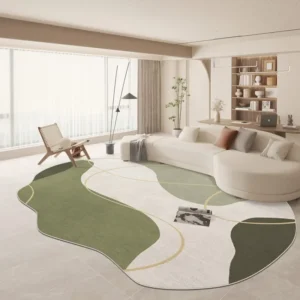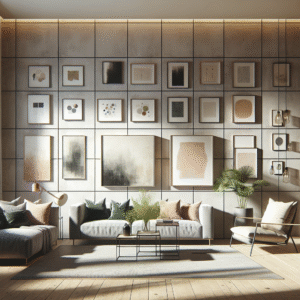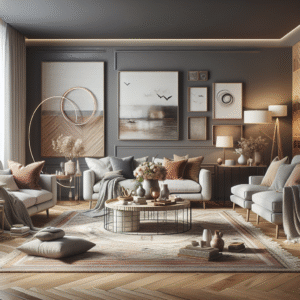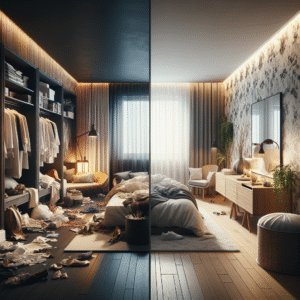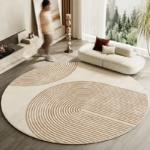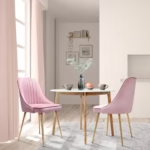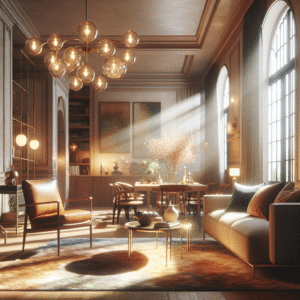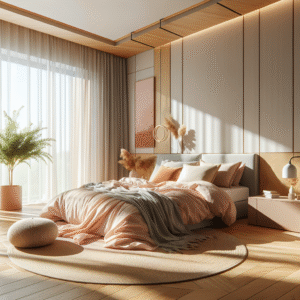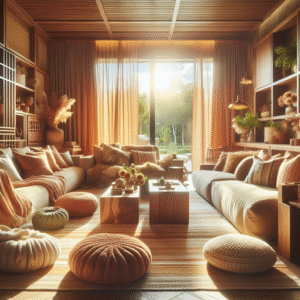Front Legs on the Rug vs. All Furniture on: The Subtle Art of Rug Placement in Interior Design
The placement of rugs can transform a room. But how do you know if you should have just the front legs of furniture on the rug or all the furniture entirely? This dilemma is common among homeowners and interior designers alike.
In this article, we will explore the subtle art of rug placement within interior design. You’ll learn about the benefits, aesthetics, and practical tips for achieving the perfect look and feel in your space. By the end, you’ll be able to make informed decisions about your rug and furniture placement, ensuring harmony and functionality in your interiors.
We’ll cover various aspects, including:
- The significance of rug placement
- Different styles of rug placements
- Common design principles
- Practical tips for selecting the right rug
- Examples and case studies to inspire your design choices
The Significance of Rug Placement in Interior Design
Rugs are more than just decorative pieces; they play a critical role in defining spaces. Good rug placement can:
- Enhance the overall aesthetic
- Provide comfort and warmth
- Define areas in an open concept layout
When choosing whether to have all furniture on the rug or just the front legs, consider the room’s purpose and the intended visual impact.
The Functionality of Rugs
Rugs can serve various functions based on their placement:
- Comfort: A plush rug can add warmth underfoot, especially in colder climates.
- Sound Absorption: Rugs can dampen sound, making spaces feel cozy.
- Style Statement: A well-placed rug can become the room’s focal point, helping to unify different design elements.
All Furniture on the Rug vs. Front Legs on the Rug
Deciding whether all furniture should sit on the rug or just the front legs depends on various factors:
Aesthetics
All furniture on the rug can create a unified, cohesive look, ideal for smaller spaces, while front legs on the rug can visually delineate areas and provide an open, airy feel.
Size Considerations
The size of your room plays a significant role. In larger spaces, a rug can help ground furniture and create an intimate feel.
Common Design Principles for Rug Placement
Here are a few design principles to keep in mind:
- Scale: Choose a rug size that complements the room’s scale.
- Balance: Ensure that the furniture’s placement creates visual balance.
- Proximity: Keep furniture close together to foster conversation.
Practical Tips for Selecting the Right Rug
Selecting the perfect rug goes beyond just aesthetic considerations. Here’s a guide:
- Material: Choose a material that aligns with your lifestyle (e.g., pets, children).
- Color and Patterns: Use colors that complement your overall color scheme and patterns that fit the room’s theme.
- Care and Maintenance: Consider how easy it is to clean and maintain.
Case Studies and Real-World Examples
Here are some examples that demonstrate effective rug placement:
Example 1: Open-concept Living Area
In an expansive living area, having all furniture on the rug helps to define the space, making it feel cozy and intimate. This approach can create a clear distinction between the living area and adjoining spaces.
Example 2: Small Rooms
In a smaller room, allowing only the front legs of furniture to sit on the rug can create a sense of openness, preventing the room from feeling crowded.
Conclusion: Mastering the Art of Rug Placement
In summary, the decision to place all furniture on the rug or just the front legs depends on your space’s layout and intended atmosphere. Good rug placement can enhance the beauty and functionality of your interior design. Experiment and choose what feels right for your home.
For more information on interior design, check out our related articles on Interior Design Essentials and Choosing the Right Color Palette.
Frequently Asked Questions
What is the best rug size for a living room?
The best rug size for a living room is large enough to accommodate all the front legs of the furniture. This typically means choosing a rug that extends about 18–24 inches beyond the seating arrangement.
Can I use a small rug in a large room?
Yes, a small rug can be used in a large room, especially if you keep the furniture arrangement around the rug or off to one side to create an intimate area within the space.
What materials should I consider for rugs?
Common rug materials include wool, cotton, synthetic fibers, and jute. Each material has its benefits, such as durability, ease of cleaning, and comfort.
Are patterned rugs better than solid rugs?
It depends on the room’s overall design. Patterned rugs can add interest and hide stains well, while solid rugs can provide a clean backdrop for more colorful furnishings.
How should I clean my rug?
Cleaning methods depend on the material. Generally, regular vacuuming and occasional professional cleaning will keep your rug in good shape.
Content Disclaimer
The information provided in this article is for educational purposes only. Consult with a professional for specific design needs or questions.
Categories
- Accent Walls & Ceilings (15)
- Art Curation & Gallery (30)
- Bedding Style Trends (42)
- Bedroom Makeover (35)
- Bohemian & Eclectic Styles (15)
- DIY & Budget-Friendly Decor (14)
- Eco-Friendly Design (16)
- Furniture Care (34)
- Home Decor & Design Ideas (103)
- Home Wellness Spaces (15)
- Integrated Outdoor Living (14)
- Kids and Nursery Decor (15)
- Living Room Decor (35)
- Minimalist & Japandi Style (18)
- Mix & Match Techniques (34)
- Modern & Contemporary Design (14)
- Rug Sizing & Placement (34)
- Seasonal Home Decor (37)
- Small Space Solutions (19)
- Wall Art & Painting Tips (37)
Recent Posts
Recent Comments
Archives
Product Gallery
-
 Large Area Green Rugs for Bedroom Nordic Living Room Decoration Shaped Carpet Irregular Plush Lounge Rug Home Thick Washable Mat Rated 5.00 out of 5$57.07 – $359.83Price range: $57.07 through $359.83
Large Area Green Rugs for Bedroom Nordic Living Room Decoration Shaped Carpet Irregular Plush Lounge Rug Home Thick Washable Mat Rated 5.00 out of 5$57.07 – $359.83Price range: $57.07 through $359.83 -
 Nordic Style Rugs for Bedroom Morandi Living Room Decoration Carpet Large Area Geometry Lounge Rug Home Cloakroom Non-slip Mat Rated 5.00 out of 5$40.98 – $620.81Price range: $40.98 through $620.81
Nordic Style Rugs for Bedroom Morandi Living Room Decoration Carpet Large Area Geometry Lounge Rug Home Cloakroom Non-slip Mat Rated 5.00 out of 5$40.98 – $620.81Price range: $40.98 through $620.81 -
 Irregular Shapes Living Room Decoration Carpet Modern Style Rugs for Bedroom Home Thicken Plush Rug Fluffy Soft Lounge Floor Mat Rated 4.75 out of 5$58.00 – $360.83Price range: $58.00 through $360.83
Irregular Shapes Living Room Decoration Carpet Modern Style Rugs for Bedroom Home Thicken Plush Rug Fluffy Soft Lounge Floor Mat Rated 4.75 out of 5$58.00 – $360.83Price range: $58.00 through $360.83





